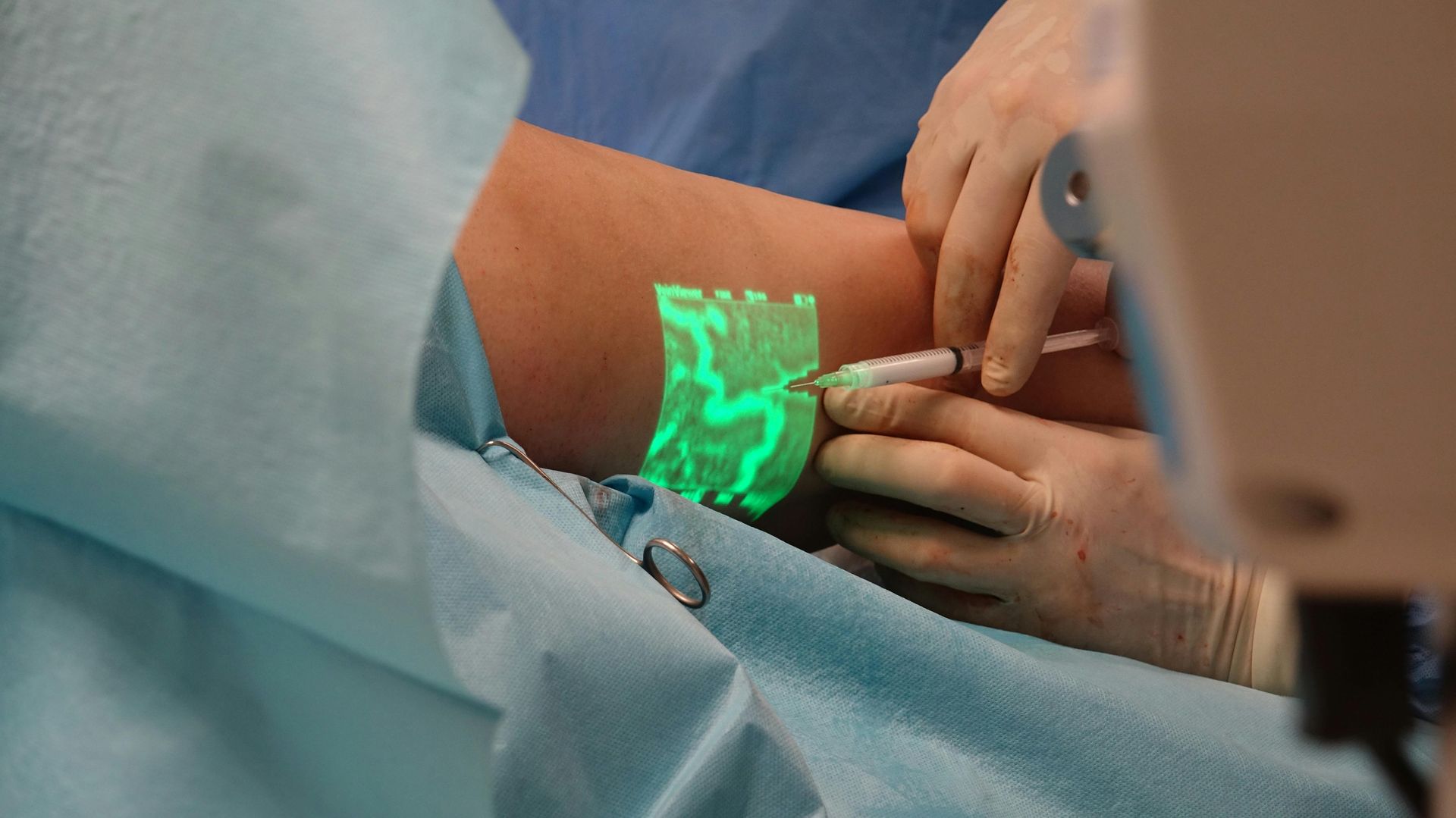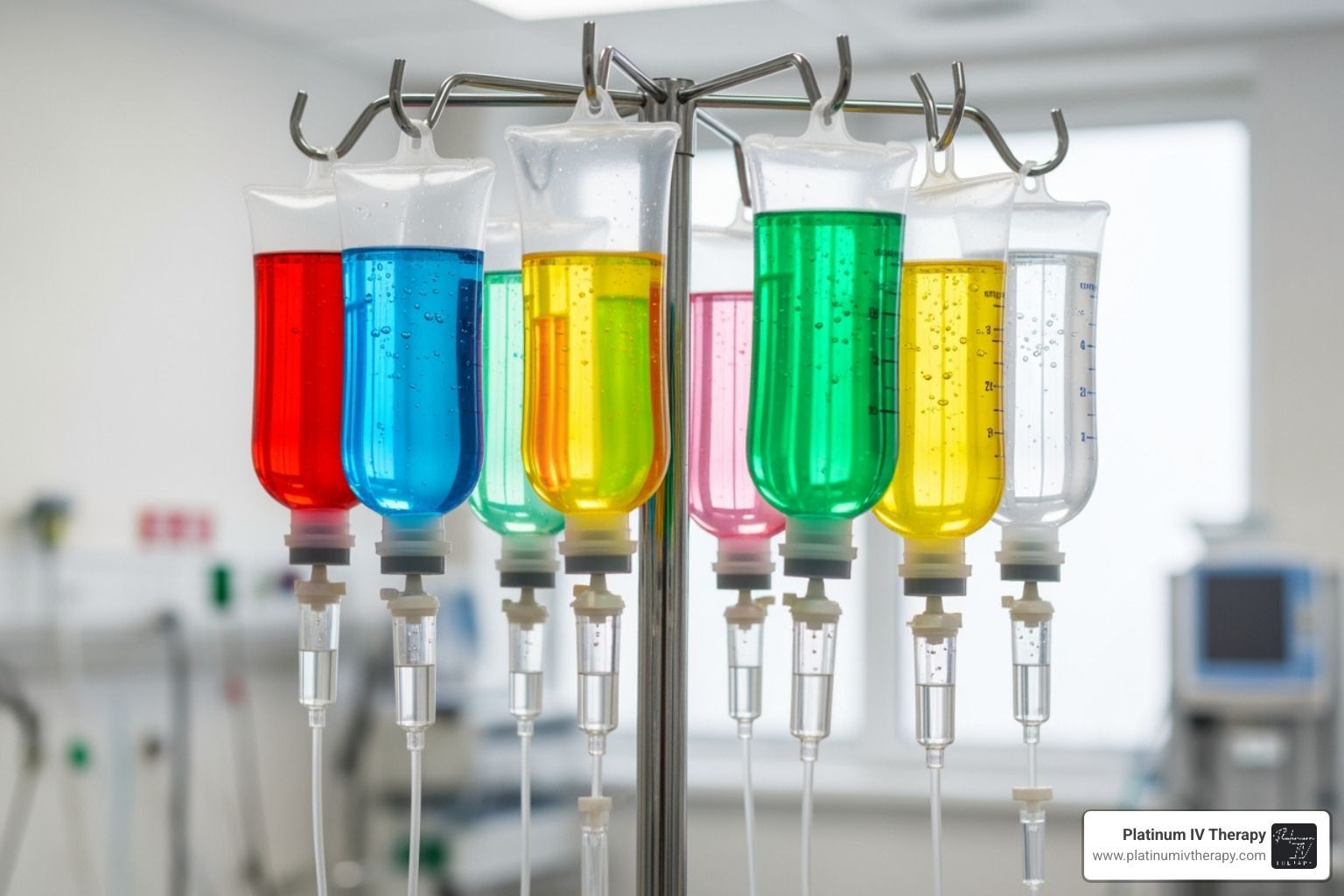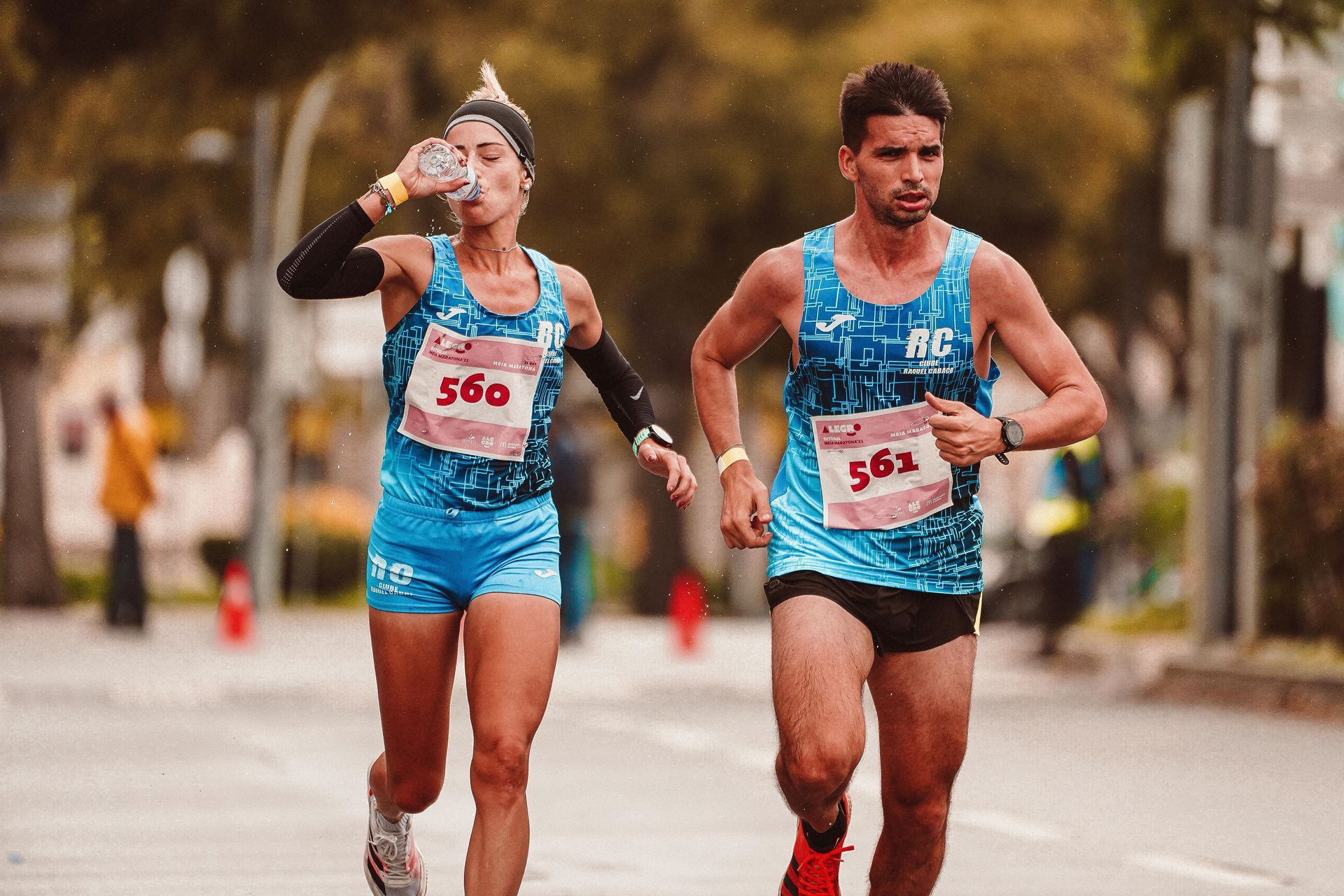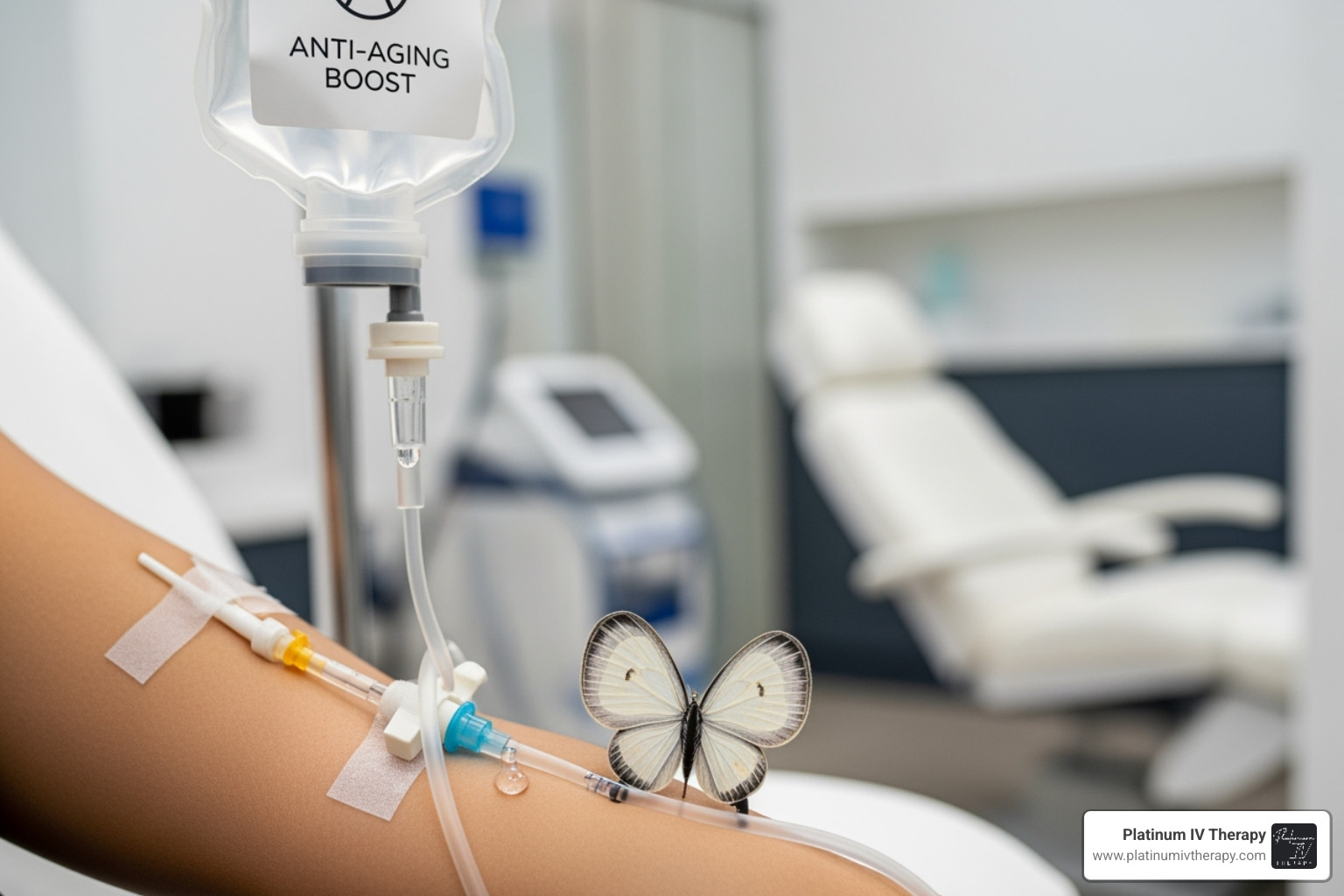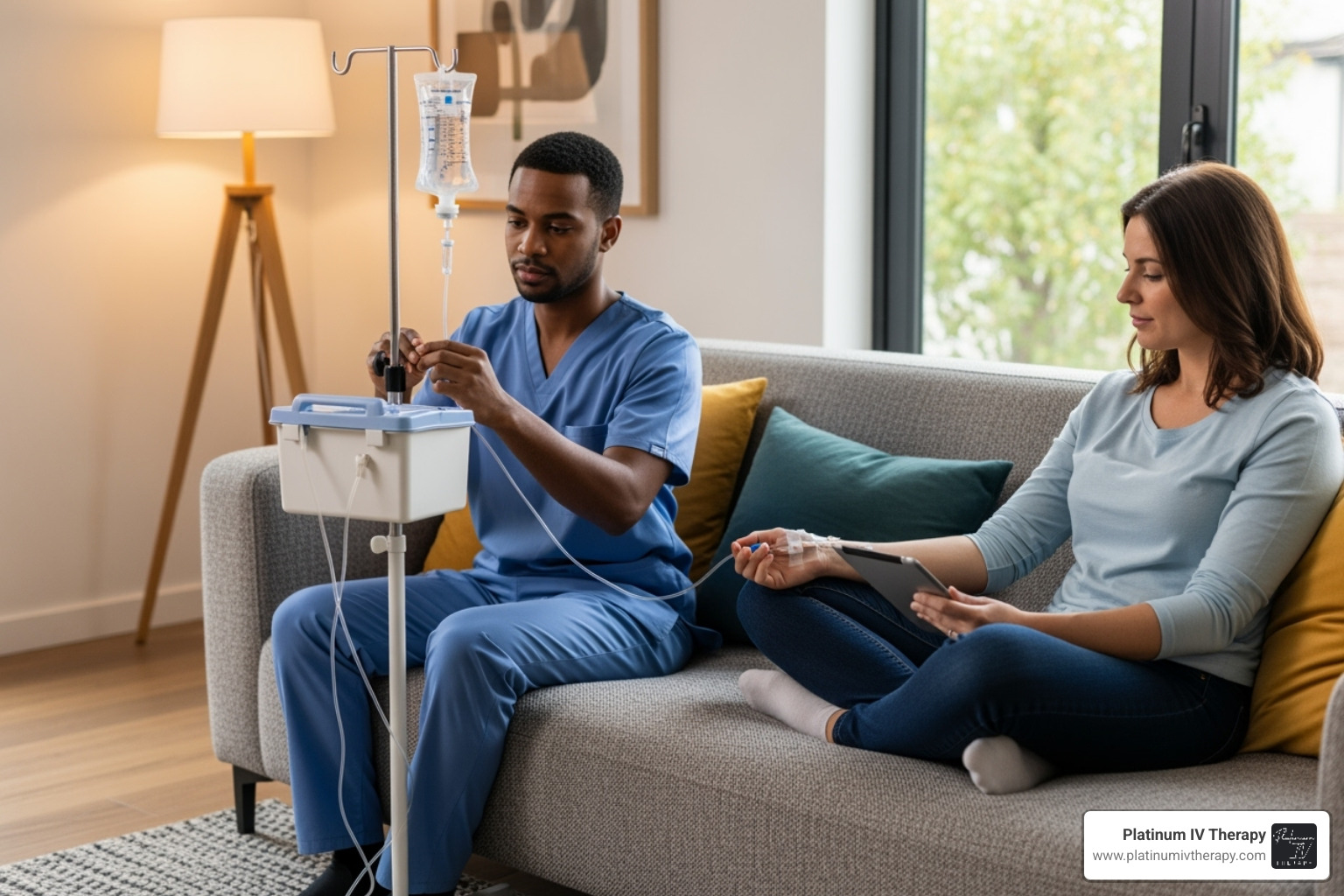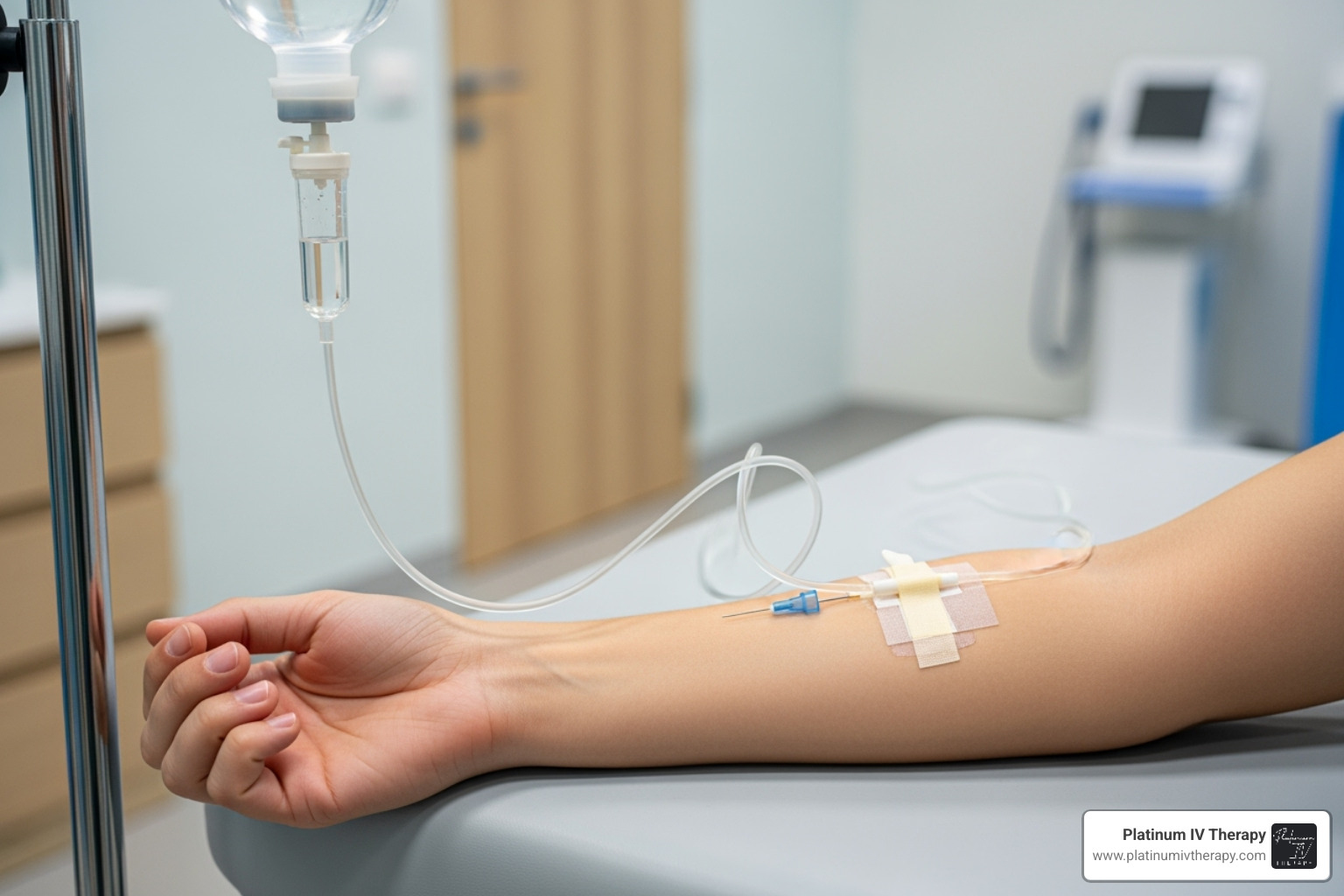How Long Does Being Drunk Last? What Affects It and How to Recover
Alcohol’s effects aren’t just a quick buzz, they follow a clear timeline. After your first drink, alcohol absorbs through the stomach and small intestine, peaks in your bloodstream within 1–3 hours, and is then metabolized by the liver at a steady rate. How long you feel drunk depends on what and how much you drank, your body weight and composition, whether you ate, your hydration status, and overall health. Even after your blood alcohol concentration falls, dehydration and nutrient depletion can leave you with headache, nausea, brain fog, and fatigue that persist into the next day.
When recovery feels rough, Platinum IV Therapy offers supportive IV hydration options that help you rehydrate, rebalance electrolytes, and ease symptoms while your body naturally clears alcohol. Our hangover-focused blends can help you feel steadier and clearer without pretending to “sober you up” faster.
Key Factors That Affect How Long Alcohol Stays in Your System
Body Weight and Composition
Alcohol distributes itself primarily in body water. People with more lean muscle and higher water content tend to dilute alcohol more effectively, resulting in lower blood alcohol concentrations (BAC) after drinking. In contrast, individuals with higher body fat, since fat tissue contains less water, often experience higher BAC levels from the same amount of alcohol. Even two people of the same weight may react differently depending on their muscle-to-fat ratio, which influences how efficiently their body processes alcohol.
Sex Differences
Sex plays a major role in alcohol metabolism. Women usually reach higher BACs than men after consuming the same amount of alcohol. This difference is partly due to lower average body water content, hormonal influences, and reduced levels of stomach enzymes that break down alcohol before it enters the bloodstream. Because of these factors, women often feel the effects of alcohol faster and for a longer duration compared to men of similar weight.
Food Intake Before Drinking
Eating before or while drinking can significantly slow down alcohol absorption. Foods rich in protein, fat, or carbohydrates delay the stomach from emptying into the small intestine, which is where alcohol is absorbed most quickly. As a result, people who drink on an empty stomach may experience a sharper spike in BAC and a longer period of intoxication than those who have eaten beforehand.
Type and Amount of Alcohol Consumed
The strength and volume of alcohol consumed also matter. Drinks with a higher alcohol concentration deliver more ethanol per sip, increasing BAC more quickly. Drinking several servings in a short time overwhelms the body’s ability to metabolize alcohol, causing levels to climb rapidly. Binge drinking patterns, where large amounts are consumed in a short window, often lead to prolonged intoxication and more intense after-effects.
Hydration and Liver Health
Hydration status does not change the speed at which alcohol enzymes work, but dehydration can worsen symptoms such as dizziness, headache, and weakness. Reduced body water also means alcohol becomes more concentrated in the bloodstream. More importantly, liver health is a critical factor. Since the liver houses the key enzymes responsible for breaking down alcohol, conditions like fatty liver, hepatitis, or long-term alcohol damage can slow metabolism and keep alcohol in the system longer. Genetic differences in enzyme activity also explain why some people process alcohol faster or slower than others.
Other Factors That Influence Alcohol Duration
- Age: Older adults often process alcohol more slowly due to reduced liver efficiency and lower body water.
- Genetics: Variations in alcohol-metabolizing enzymes can make some people clear alcohol faster or slower.
- Medications: Certain drugs compete with alcohol for liver enzymes, slowing breakdown and intensifying effects.
- Chronic Alcohol Use: Habitual drinking may initially speed metabolism, but long-term use can damage the liver and slow clearance.
- Metabolic Rate: People with higher overall metabolism may process alcohol slightly quicker.
- Drinking Pattern: Sipping slowly keeps BAC lower, while binge drinking causes sharp spikes that last longer.
- Sleep and Stress: Fatigue and stress don’t change metabolism directly but can make alcohol’s effects feel stronger and longer-lasting.
What Are the Symptoms That Linger After Drinking?
- Fatigue often persists because alcohol disrupts normal sleep cycles and adds an overnight metabolic load on the liver, leaving you low on energy the next day.
- Brain fog can linger as mild dehydration and poor-quality sleep reduce attention, processing speed, and short-term memory, making it harder to focus.
- Headaches may continue due to blood-vessel changes, fluid shifts, and congeners or histamines in certain drinks, which irritate sensitive tissues.
- Nausea and other GI upset can remain because alcohol irritates the stomach lining and slows gastric emptying, so queasiness and reflux take longer to settle.
- Dehydration frequently outlasts intoxication since alcohol is a diuretic, and the resulting loss of water and electrolytes can cause dizziness, weakness, cramps, and dry mouth until you rehydrate.
Can You Speed Up Sobering? Myths vs. Facts
Many people believe in quick fixes to sober up after drinking, strong coffee, a cold shower, or even a workout. While these may make you feel more alert in the short term, they do not speed up how quickly your body processes alcohol. The liver metabolizes alcohol at a steady rate of about one standard drink per hour, and no trick or remedy can accelerate that timeline.
What does make a difference is supportive care. Time is the only true way to sober up, but hydration can ease symptoms while you wait. Drinking water, consuming electrolyte-rich fluids, and resting all help reduce the discomfort of dehydration and fatigue. For those who struggle to rehydrate orally due to nausea or vomiting, IV hydration offers a direct way to restore fluids and balance electrolytes, helping you feel steadier while your body finishes clearing alcohol.
How Platinum IV Therapy Helps You When Being Drunk Lasts Longer
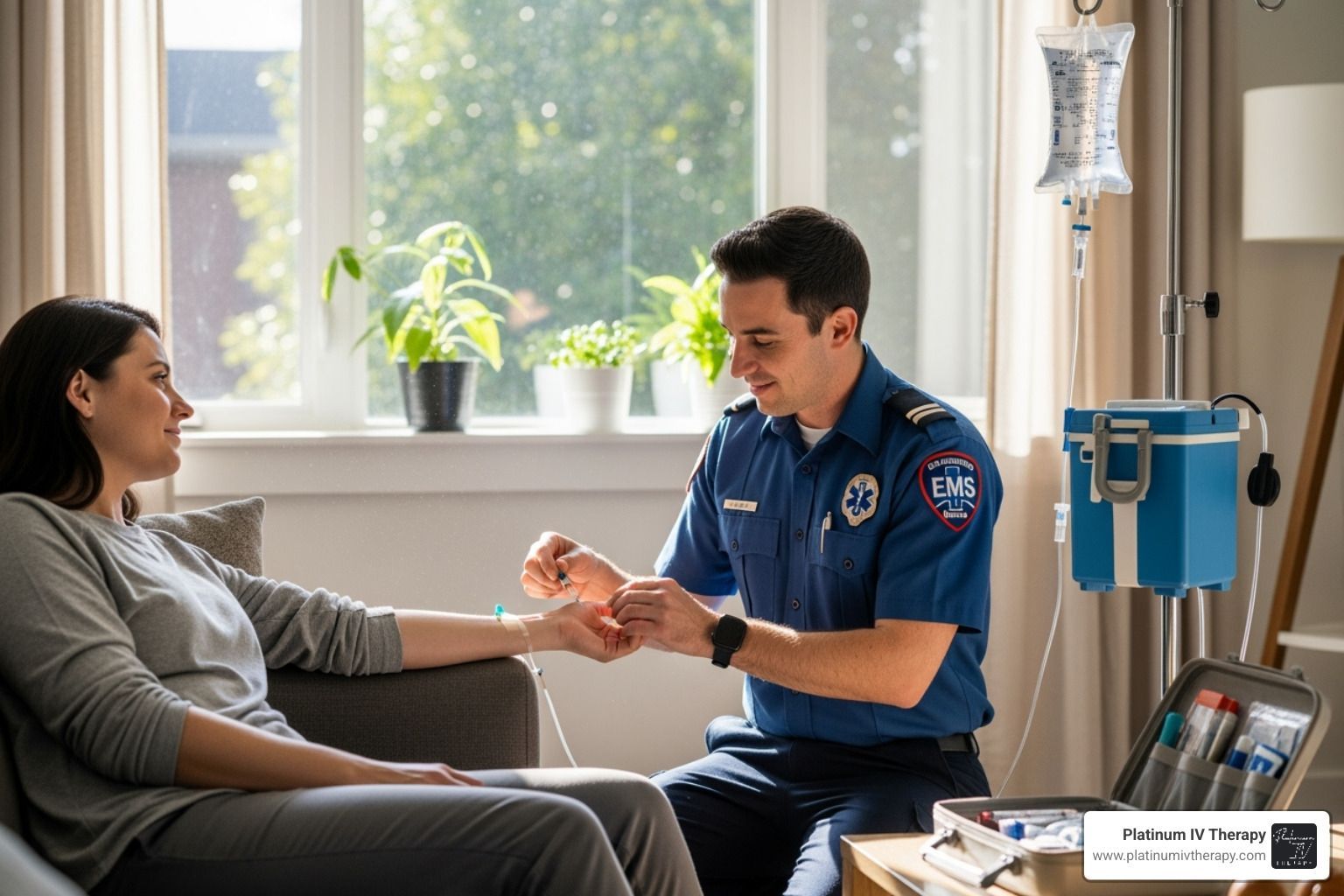
When people ask how long does being drunk last, the honest answer is that your liver clears alcohol at a steady pace and there’s no shortcut to speed that up. What can be improved is how you feel while you wait: the dehydration, electrolyte loss, poor sleep, headache, nausea, and brain fog that make the aftermath stretch into the next day. This is exactly where Platinum IV Therapy steps in supporting your body, so the recovery window feels shorter and more manageable.
For comprehensive next-day relief, our Reboot Hangover Relief drip pairs IV fluids and electrolytes with B-vitamins, with the option to include anti-nausea and pain-relief medication for added comfort. If you mainly need hydration, Simply Fluids provides a straightforward 1,000 cc infusion to restore fluid balance. When fatigue and mental haze are your biggest hurdles, Quench layers in vitamin C, magnesium, and B-complex to replenish what alcohol depletes and help you feel clearer and steadier.
All treatments are delivered by trained professionals either in-clinic or through convenient mobile service at your location with screening and monitoring for safety. While IV therapy doesn’t make you sober faster, many clients report feeling noticeably better within 30–60 minutes as hydration and nutrients are restored. Pair your drip with simple after-care—steady water intake, a light protein-plus-carb meal, and an early night to support your body as it completes the natural process of eliminating alcohol.

